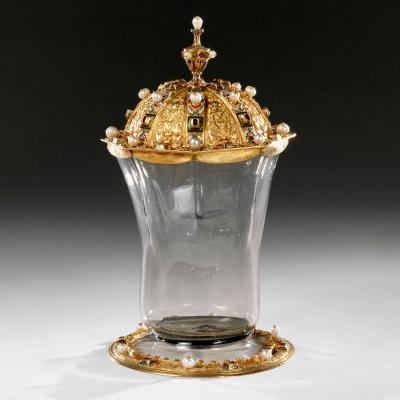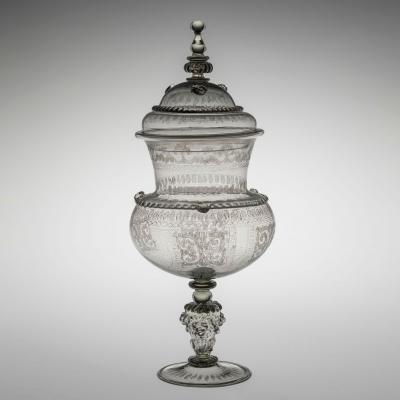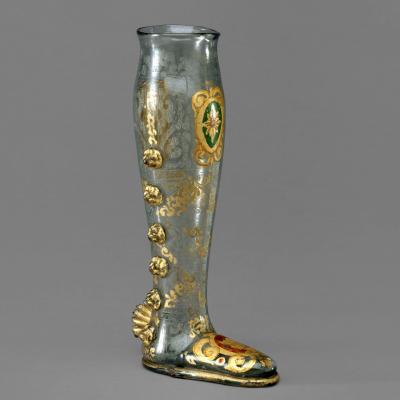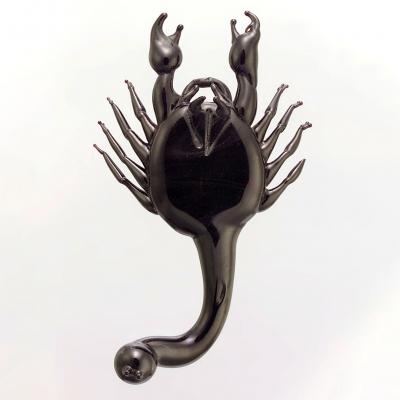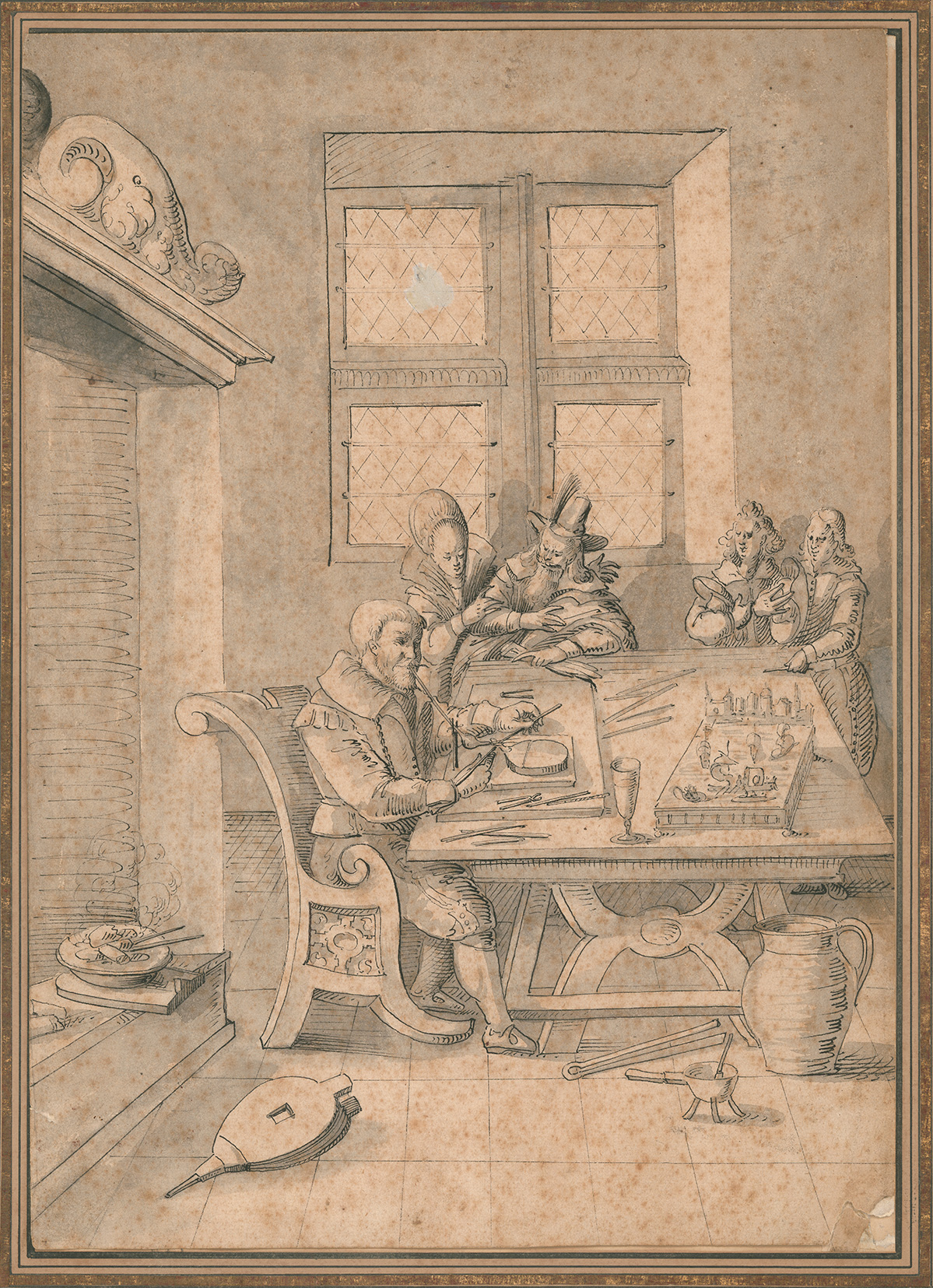The history of Venetian-style glass in Austria is particularly interesting, for at least three reasons. First, it was one of two places where Venetian-style furnaces and Venetian artisans could work outside Murano legally and under the authority of La Serenissima, the Republic of Venice (the other was Florence). Second, the most influential and highest-ranking regional aristocrat, Ferdinand II (1529–1595; Fig. 22), is known to have been an enthusiastic collector of natural and man-made wonders—including glass—and may himself have been an amateur glassblower (see Ferdinand II Beaker). Third, the sheer duration of commitment to Venetian-style glass is noteworthy. The list of Austrian glasshouses, just up to the late 16th century, is impressive: Vienna (1486), Laibach (1517), Hall (1534), and Innsbruck (1570).
Of the greatest interest is the Hofglashütte (court glass factory) set up on the grounds of Ferdinand’s “pleasure palace,” Schloss Ambras (Ambras Castle), in 1570. The Venetian authorities cooperated in the endeavor and were asked by the archduke to send glassblowers who demonstrated “the most fantasy.” His glasshouse, a “plaything,” was never meant to be commercially viable. It operated until 1590.23

